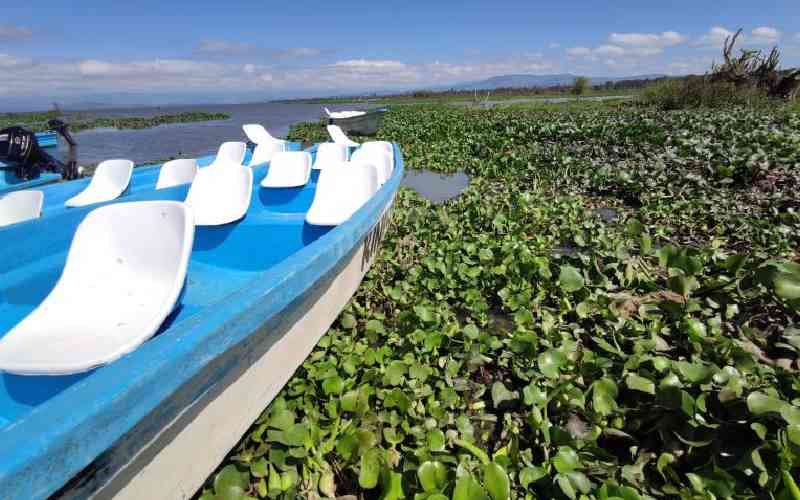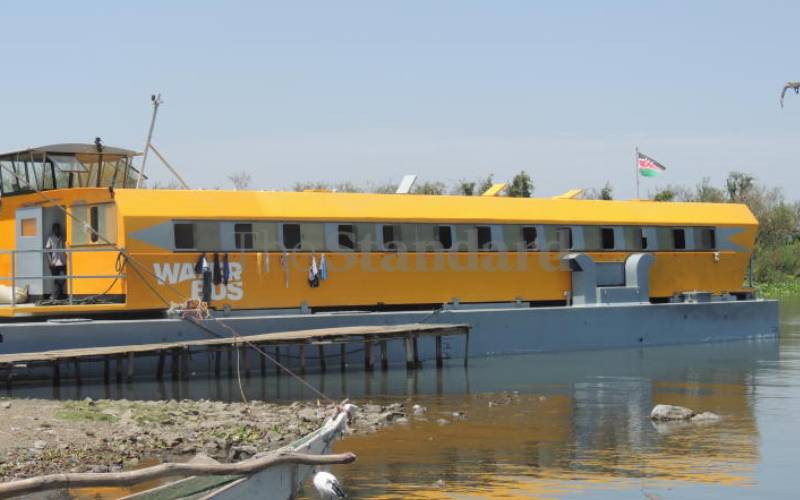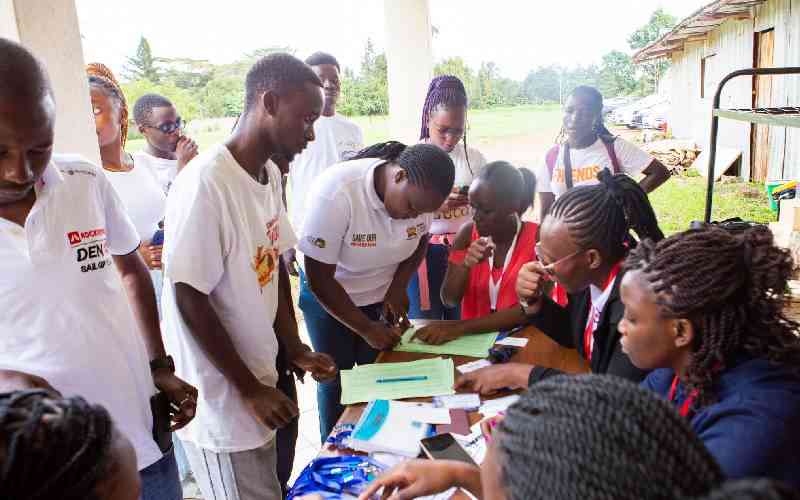Construction plans for a 470-kilometre road along the shores of Lake Victoria have raised hope in the region that it will stimulate the local economy.
The design of the Sh70 billion road running from Bumala on the Busia border with Uganda to Muhuru Bay on the Migori border with Tanzania is complete and has been approved.
The feasibility study and design were done at a cost of Sh300 million.
The road will meander its way through Busia, Siaya, Kisumu, Homa Bay and Migori.
Once the Government receives a report detailing the number of people to be displaced by the road, the National Land Commission (NLC) is expected to do a valuation and compile a register for compensation as the Government scouts for funds from development agencies such as the World Bank or the African Development Bank.
Three years
Each road section will take up to three years to complete, according to summary papers on the project.
The Government is rooting for one-off funding to have the phases run concurrently, highly placed sources intimated.
In a visit to the region later this month, President Uhuru Kenyatta is expected to highlight the project mooted three years ago as part of the Jubilee government flagship projects.
The road will pass through Siaya, Kisumu and Homa Bay counties.
It is expected to accelerate free flow of goods and services across five counties while providing connectivity to the rest of the country’s national road network, hence spurring economic growth.
It could also catapult the western Kenya tourism circuit onto the global tourism map since it extends access to destinations such as Rusinga Island, Ndere Island National Park, Kit Mikayi and key historic attractions across the region.
A design seen by The Standard shows the project, to be undertaken by at least six contractors, will run very close to the lake, passing through major beaches such as Sio Port and Port Victoria in Busia; Usenge, Uhanya, and Asembo in Siaya, and Kaloka, Paga and Dunga in Kisumu.
Paga beach has been identified as the location for the proposed Sh13.7 billion new Kisumu port, to be built as an extension of the Standard Gauge Railway to Kisumu. The road is, therefore, likely to play a crucial role in the revival of maritime trade on Lake Victoria.
From the Kisumu port, the road will run along the lake to Korando, near the Kisumu International Airport, from where it will branch off and lead into the Kisumu-Busia highway at Otonglo market.
Stay informed. Subscribe to our newsletter
Sources who declined to be named because they are not authorised to speak to the media explained that due to the swampy nature of the Nyando plains, from Kisumu town the road will follow the established Kisumu-Nairobi road, branching off at Ahero town towards Katito.
Here it will veer off the road leading to Kendu Bay, heading back towards Homa Hills along the shores and again to the Kendu Bay pier and stretch to Bay town.
At the Mbita junction, it will turn towards Sindo, Sori, Karungu and Muhuru Bay beaches.
Kenya National Highways Authority (KeNHA) Nyanza Regional Director Felix Osongo said according to the design, the road would be one of the least disruptive as it runs mostly in low-inhabited lakefront rural settlements.
Public amenities
“That report is not yet out but we do not expect a lot of disruptions in settlements, and especially public amenities like schools. The land commission will evaluate the affected parcels and compensation will be done by the Government; it is not part of the project cost,” he said.
Mr Osongo added that in towns, the road would follow established networks, thus “even in areas in town where we might need to upgrade existing roads, the current road reserves will cushion the project from additional costs”.
The project comes at a time when new reports by the Kenya Marine Fisheries Research Institute (Kemfri) have re-evaluated Lake Victoria’s fisheries at about Sh40 billion annually. This is more than three times the Sh12 billion collected from the industry, according to the report.
The introduction of nearly 4,000 fish cages on Lake Victoria have shored up earnings as effort (number of fishermen on the lake) also went up in the last three years, according to Kemfri Director Kristopher Aura.
Plans to build the road coincide with a resolve by the East African Community (EAC) to exploit Lake Victoria as a cheap, safe and efficient transport corridor for general cargo.
The resolve is contained in the deliberations of the 14th summit of the Northern Corridor Integration Projects held in Nairobi in June.
The EAC heads of State want to leverage Lake Victoria as a crucial transport corridor in the shipment of general cargo into and out of the region
This signals a return to triangular trade between Kisumu, Jinja (Uganda) and Mwanza in Tanzania. Trade blossomed before the collapse of the old railway line terminating at the Kisumu pier.
Dwindling prospects saw the grounding of Kenya’s ferry wagon, MV Uhuru as well as MV Umoja of Tanzania and Uganda’s MV Kabalega and MV Kaawa, which hauled billions of shillings worth of general dry cargo across the region, easing pressure on the roads.
In deliberations by EAC partner states in June, an agreement was reached to seek joint investments in Lake Victoria’s inter-modal transport system.
The June reopening of the Mwanza port, which has been inactive for nearly 10 years, and efforts by Uganda to overhaul Jinja and Port Bell have raised optimism about a return to triangular trade.
The Kenya Ports Authority (KPA) has completed the first phase of renovations of the Kisumu pier in readiness for bigger trade.
The World Food Programme (WFP) and Kenya Pipeline Company are among organisations that are optimistic that the resolve will live up to the potential of reviving trade on Lake Victoria, which has proved to be time and cost effective.
“A shipment of 18 train wagons of vegetable oil destined for WFP operations in Uganda in June marked the reopening of the Mwanza Port bell link, says WFP.
“It is expected that the new multi-modal route to be plied by Tanzanian ferry MV Umoja (sister ship to Kenya’s MV Uhuru) would ease transportation of exports and imports between Uganda and Tanzania at a much reduced cost and time,” WFP said in the statement on their website.
Transit time
According to the organisation, the route cuts transit time by more than 50 per cent and costs by 40 per cent, offering relief to landlocked countries such as the Democratic Republic of the Congo, Uganda, Rwanda, Burundi and South Sudan.
The reopening of the Lake Victoria corridor is in turn expected to reopen a vibrant economic corridor for the EAC and help to attract public and private sector investment, according to resolutions of the June Summit.
Kenya is angling for a bigger share of the pie with the anticipated termination of the Standard Gauge Railway at a newly-built Sh13.7 billion port on Lake Victoria.
Javan Wanga, KPA’s head of Lakes and Inland Waterways, told The Standard that a series of strategies, including returning the 1,000-tonne MV Uhuru to the waters, was underway to position Kenya as a vital player in Lake Victoria trade.
The port, sitting on 20.4 square kilometres of land and 67.8 square kilometres of water, will berth vessels of up 1,000 tonnes and have an initial port capacity fpr 600,000 tonnes annually.
 The Standard Group Plc is a
multi-media organization with investments in media platforms spanning newspaper
print operations, television, radio broadcasting, digital and online services. The
Standard Group is recognized as a leading multi-media house in Kenya with a key
influence in matters of national and international interest.
The Standard Group Plc is a
multi-media organization with investments in media platforms spanning newspaper
print operations, television, radio broadcasting, digital and online services. The
Standard Group is recognized as a leading multi-media house in Kenya with a key
influence in matters of national and international interest.
 The Standard Group Plc is a
multi-media organization with investments in media platforms spanning newspaper
print operations, television, radio broadcasting, digital and online services. The
Standard Group is recognized as a leading multi-media house in Kenya with a key
influence in matters of national and international interest.
The Standard Group Plc is a
multi-media organization with investments in media platforms spanning newspaper
print operations, television, radio broadcasting, digital and online services. The
Standard Group is recognized as a leading multi-media house in Kenya with a key
influence in matters of national and international interest.








